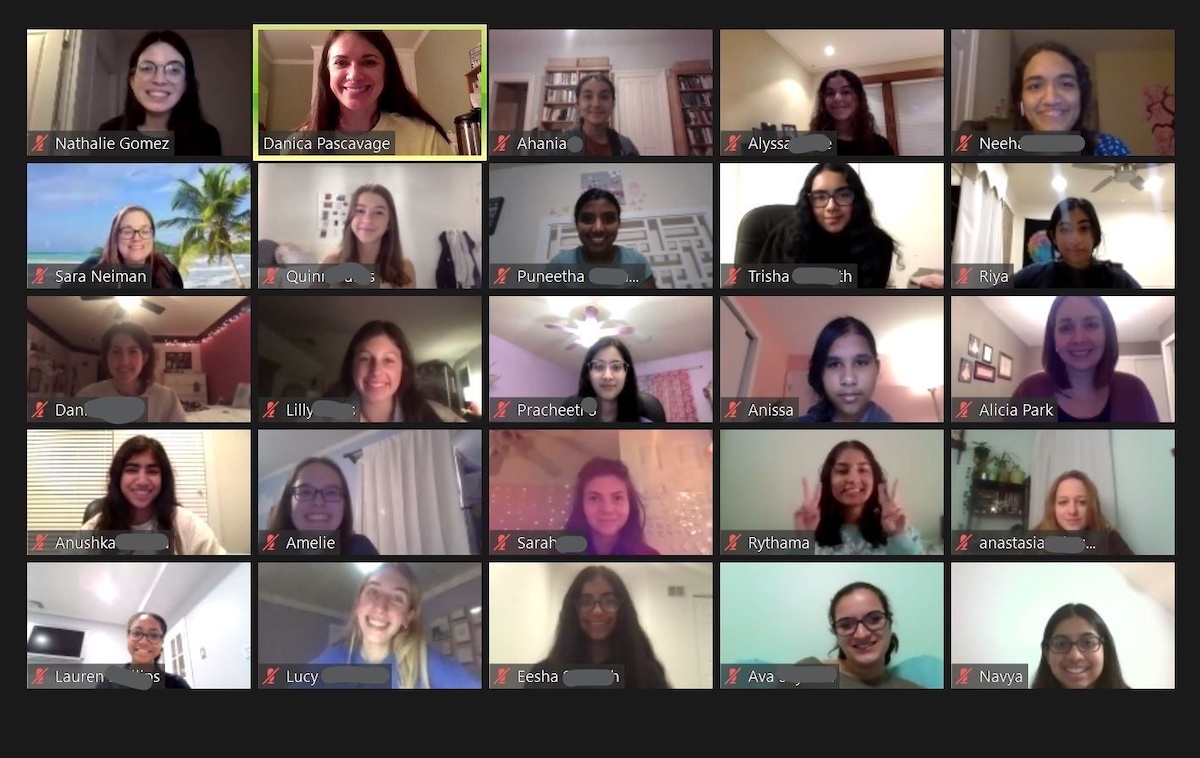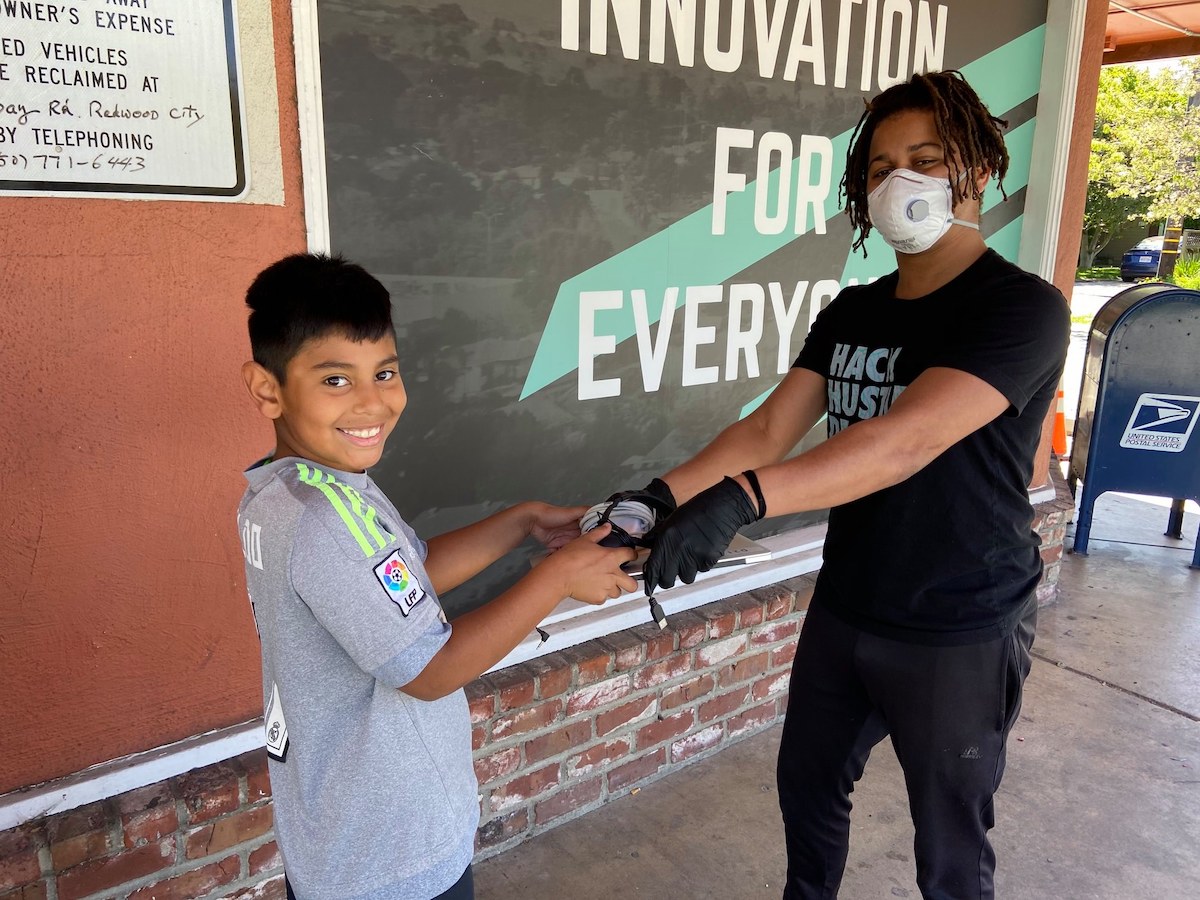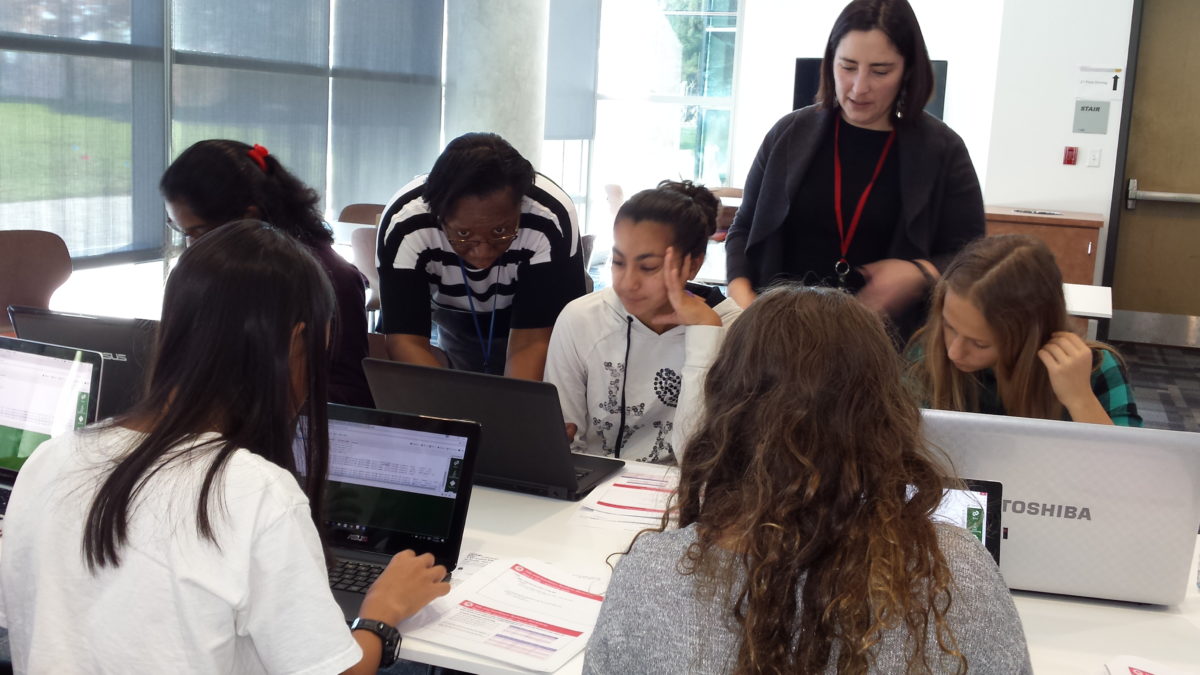Increasing diversity is a necessary change for tech teams that care about equity, and building tools that benefit all into the future. But for more systemic impact, that work can’t happen only at the hiring level. It needs to start at the beginning of the pipeline.
It’s something the tech industry has been working on for years, but progress is slow. In Philadelphia, only 15% of tech workers are Black and 9% are Hispanic or Latinx, though these groups make up 44 and 15% of the city’s overall population. At the same time, according to Pew Research, employment in low-wage jobs has declined nearly 35% from April 2019 to April 2020 — and some professionals have used the pandemic to pivot into higher-paying jobs in the tech sector.
People from marginalized backgrounds frequently gain fewer opportunities due to inequality in education. To combat the issue, racial equity-minded bootcamps and other resources in cities like Philadelphia have invested funding in shifting a paradigm that has remained exclusive.
Businesses are increasingly feeling the urgency to enact change so their local tech industry better reflects the demographics of the people who make up their city or region. They can do this by directly hiring more diverse talent, of course. But for longer-term change, investing in tech education programs is a way to build up a future generation of technologists from nontraditional backgrounds. And through youth programming, especially, nonprofits with the goal of increasing the tech skills of Black and brown people have frequently found allies in corporate entities providing resources so they can scale.
Technical.ly spoke to leaders from two tech nonprofits helping young people build tech skills, as well as a leader from a financial company partnering with a nonprofit, to gain insight on how businesses and nonprofits can work best together in boosting the tech talent pipeline, starting with K-12.
In the next two parts of this series, we’ll explore best practices for reskilling and upskilling diverse professionals with adjacent skills, and for attraction and retention of existing diverse talent.
Case study #1: Directly fund impactful work.
JPMorgan Chase (JPMC) Market Manager of Community Engagement Daniel Okonkwo has a background in law and nonprofit work that informs the strategies he employs in partnering with nonprofits from the vantage point of a corporate entity. This January, JPMC dedicated a $1 million grant to Philadelphia Youth Network (PYN) to prepare young people who are neither in school nor working for the tech and healthcare industries.
The grant will help PYN sustain their work and help remove barriers to employment that Black and brown Philly residents have faced in the market, like criminal records or a lack of opportunities in work and school. The pilot program is JPMC’s first effort of its kind in Philadelphia, with similar work already existing in Chicago and Delaware to diversify the tech talent pipeline.
Committing the time to develop relationships between nonprofits and businesses creates lasting partnerships that yield results, Okonkwo said.
“We have worked with PYN for some years now,” he said. “When you talk about reconnecting disconnected youth, you can’t connect with a program and [just] say, ‘Let’s do it.’ Cultural competency matters. Philadelphia Youth Network has a track record in doing this work.”

Daniel Okonkwo. (Photo via LinkedIn)
By using a dual-customer approach in serving both young people and local employers, Okonkwo said that JPMC and PYN can help the two groups meet in the middle. After understanding what employers’ needs are, he said, PYN can design programs for young people that will help them meet the needs of employers. And approximately 25% of Philadelphia’s job growth is in tech, which means the field is ripe with opportunity.
As a former nonprofit executive director, of DC Lawyers for Youth, Okonkwo is aware of the pressures many nonprofits face in executing goals and realizes that he cannot reach an agreement with every nonprofit that shows interest. But money is only one way businesses can help nonprofits.
“Sometimes, at JPMC we may not be able to fund with money, but it doesn’t mean we can’t connect one of our bankers to be a board member,” he said, “or have someone talk about financial health matters” to interested orgs.
- Business action item — Leaders, take a hard look at your own organizational values — or define them if you haven’t yet. Only after that should you dive into nonprofits’ mission statements, then reach out if there’s a match. Focus on collaborating with organizations with a proven track record in executing the goals your company also has in mind. For JPMC, PYN was an ideal partner because of its capacity for helping young people in Philadelphia find opportunities, which the financial institution had also identified for its philanthropy.
Case study #2: Donate resources like space and time.
Education nonprofit TechGirlz trains girls in basic design and coding skills via workshops, summer camps and design events. Around 25,000 girls worldwide have attended its free TechShopz, and its curricula has been taught across 20 countries.
According to Director Amy Cliett, collaboration with businesses has helped the Philadelphia-based but nationally focused org bring in financial resources and other opportunities to further its work.
“We are often connected with employees as volunteers, many of whom continue to volunteer as individuals,” she said. “Many companies will lend their expertise to help create and update our curriculum. Each collaboration with a company also provides expanded opportunities to spread the word about TechGirlz and its programs to new audiences. The interactions with a wide variety of businesses also provides us with valuable insights and ideas.”

TechGirlz’s Teen Advisory Board in March 2021. (Image via facebook.com/TechGirlzorg)
Cliett believes that nonprofits should work with businesses that offer products or services that align with their mission or are relevant to the services they provide. By seeing the nonprofit-business relationship as a partnership, she said, nonprofits can succeed when they work with companies to find terms that benefit both organizations.
TechGirlz has partnered with the likes of CapGemini, SAP and O3 World. The relationship the org cultivated with Microsoft is one example of a nonprofit working closely with a business to attain specific results: Before shutting down all of its retail stores in 2020, Microsoft donated space for TechGirlz to operate its workshops and volunteers so it could facilitate those workshops at no cost to the nonprofit.
“Whether the company, like Microsoft has done, is providing volunteers, workshop space — when we are running in-person workshops — or helping us develop new curriculum and workshop topics, each of these partnerships brings additional resources and unique perspectives that assist us in furthering the TechGirlz mission,” Cliett said. (The director couldn’t share how much money the nonprofit saved by using these free spaces.)
- Business action item — Nonprofits always need cash, but many also depend on volunteers. When partnering with them, companies should set terms that benefit both organizations. If you can’t donate cash, look for what you do have plenty of. Is your (post-pandemic) office empty after 6 p.m.? Offer it to a local meetup. Do you have a team of software engineers eager to give back? Send them to a hackathon to mentor some newer folks.
Case study #3: Offer support, then get out of the way.
In his role as partnership manager at East Palo Alto, California’s StreetCode Academy, Aaron Barron works each day to extend the vision of CEO Olatunde Sobomehin. Sobomehim is a former Stanford University basketball player who founded Team Esface Basketball Academy while he was still a student in 2002 to help build character in youth through basketball camps and clinics. In 2014, he founded StreetCode to build tech skills of young people in the Bay Area.
Barron understands that funding nonprofits is a form of philanthropy and has made it a goal to partner with grantmakers who want to empower communities, while not seeing them as inferior.
“With things that would economically disadvantage people, we’re working with these companies to break through and disrupt what that means,” he said. “You don’t need to come here and come save us.”
In 2020, StreetCode served 1,200 students with classes and workshops and in the past three months, its videos ranging from educational to informational content reached nearly 60,000 views. The organization has also given out 511 laptops to the community, serves as on-call tech support to the Ravenswood City School District for 1,5000 families, and has provided over 44,000 hours of free tech classes.

StreetCode Academy laptop donation. (Photo via facebook.com/streetcodeacademy)
Barron said that by understanding what makes their org unique, nonprofit leaders can better decide whether a new opportunity aligns with their goals and make decision making that much easier.
“There are a lot of grant opportunities out there in the world, especially if you shift your mission,” he said, referring to mission creep. “But the issue is that you’re not sacrificing integrity of your organization to get the opportunity.”
Like Olatunde, Barron has his own Stanford connections that help him connect to potential partners in Silicon Valley (though he didn’t share the names of specific partners). Still, he said that he wants to use the privilege of having that college experience to build relationships and support the interests of the young people in the Bay area that StreetCode serves.
“[We] have such amazing presence here that even before tech, [there is] still a great network of people wanting to do the work. Youth just need to know how to use tools that were hidden from them. Now, we are just bringing the tools to them for what they’re doing.”
- Business action item — For business partners looking to work with nonprofits, Barron suggests that it is important to allow the nonprofits space to maintain their integrity. By trusting the work that the nonprofit is doing, you are reaffirming its work and allowing it to achieve optimal results. Sometimes, the best thing to do is just offer whatever specific support the org is asking for — then get out of the way. They know their work better than you do.

This article appears as part of the Most Diverse Tech Hub initiative and is underwritten by the City of Philadelphia Department of Commerce. It was independently reported and not reviewed by this partner before publication.
Before you go...
Please consider supporting Technical.ly to keep our independent journalism strong. Unlike most business-focused media outlets, we don’t have a paywall. Instead, we count on your personal and organizational support.
Join our growing Slack community
Join 5,000 tech professionals and entrepreneurs in our community Slack today!





